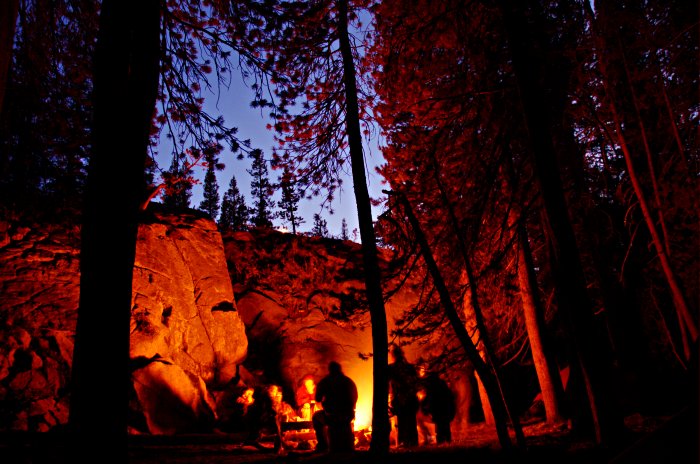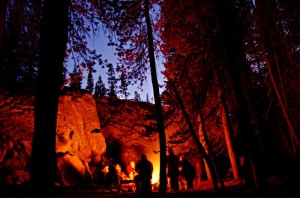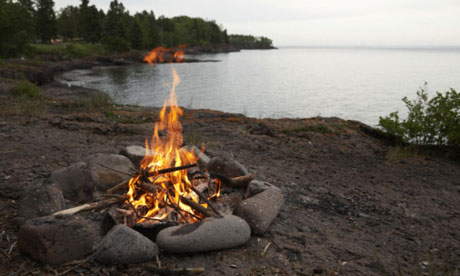Survival School – Fire Safety
Summary
 Mankind wouldn’t be anything without the discovery of fire. We’ve come a long way from painting on cave walls and living on the land—so much so, most people wouldn’t know how to accidentally start a fire, let alone create a fire that is safe to cook on and allow their family to gather around. When the Zombiepocalypse hits, we’ll be forced to revert to basic means to survive.
Mankind wouldn’t be anything without the discovery of fire. We’ve come a long way from painting on cave walls and living on the land—so much so, most people wouldn’t know how to accidentally start a fire, let alone create a fire that is safe to cook on and allow their family to gather around. When the Zombiepocalypse hits, we’ll be forced to revert to basic means to survive.

by RC Murphy
 Mankind wouldn’t be anything without the discovery of fire. We’ve come a long way from painting on cave walls and living on the land—so much so, most people wouldn’t know how to accidentally start a fire, let alone create a fire that is safe to cook on and allow their family to gather around. When the Zombiepocalypse hits, we’ll be forced to revert to basic means to survive.
Mankind wouldn’t be anything without the discovery of fire. We’ve come a long way from painting on cave walls and living on the land—so much so, most people wouldn’t know how to accidentally start a fire, let alone create a fire that is safe to cook on and allow their family to gather around. When the Zombiepocalypse hits, we’ll be forced to revert to basic means to survive.
Being able to build a fire is essential to making it past the first week after the zombies show their rotting faces. Not only will you need it to cook food, but also purify water and stay warm. We take for granted the warmth our houses retain courtesy of insulation. Tents and sleeping bags do not make it warm enough to survive outdoors.
There are a few things to remember when building a fire for your survivor camp:
- Be sure to place the fire at least twenty feet away from any tents, trees, bushes, and the camp kitchen. This clearance includes low-hanging tree branches.
- Chose a location that is blocked off from wind gusts.
- Clear away grass, leaves, branches, etc. in a ten-foot diameter around the campfire.
- Have a bucket of water and shovel handy, along with a small pile of sand or dry dirt that is free of flammable debris.
Preparing the fire pit
Dig a circular pit with a three-foot diameter. Make sure the deepest part, the center, is at least a foot deep. (If you happen to have an above-ground fire pit, dig a hole underneath it, this will make disposing of ashes easier after.)
Line the outside of the fire pit with rocks. This will keep people from accidentally stepping into the pit. It will also give you a base to set a grill on top of. (Tip from The Walking Dead: Build the fire pit wall higher to prevent the light from attracting unwanted attention.)
Gather three types of wood: Tinder (small twigs, dry leaves, dry pine needles, dry grass), Kindling (branches 1-inch in diameter and smaller), Fuel (larger pieces of wood. Avoid whole log rounds. They will burn too long to be able to control).
Make sure all wood is dry. Do not burn freshly cut (green) wood, it will smolder and create excess smoke. Green wood does not light easily, either. It takes months to properly dry green wood—up to a year. Gather all the dry wood you can when establishing camp. If you need to cut into a fresh tree, do so only if you plan to remain in camp long enough to let it dry.
Building a fire
Place two to three loose handfuls of tinder in the center of the fire pit.
Add kindling in one of the following formations: Set kindling over the tinder like you’re building a tent; Crisscross kindling over tinder; Stack kindling around tinder (think the walls of a house) and top with smaller kindling (house roof).
Light tinder with a match or lighter and gently fan the base of the fire. Add more tinder as the fire grows, make sure leaves are tucked inside the kindling so they don’t get blown away and accidentally ignite an accidental fire.
Add kindling and fuel wood to keep the fire burning.
Basic Fire Safety
- Be sure to keep the fire low, manageable.
- Supervise young children and pets near the fire.
- Watch for sparks, loose burning leaves. If they drift outside the cleared circle, extinguish them.
- Do not leave the fire burning unsupervised.
- Do not burn plastic, Styrofoam, or aluminum cans. They create fumes and particles, which are hazardous to inhale.
- Do not put glass containers in the fire. They do not burn and could shatter, leaving glass shards everywhere.
- Do not burn aerosol cans or closed containers, they will explode.
Extinguishing the fire
Allow the fire to burn down as low as possible before attempting to extinguish. It is preferable to let the fire burn down to ash.
There are two ways to fully extinguish a fire: Water and dirt.
If you are using a metal fire pit Do. Not. Use. Water. Adding water to a metal fire pit will cause it to buckle, making the fire pit unsafe to use in the future. Shovel dry dirt or sand onto the fire one scoop at a time, mixing it with the coals. Continue until no heat radiates from the fire pit. Dump the metal pit out onto the hole below.
The dirt method: You may use the dirt method without a metal pit. Do Not simply bury the coals. Buried coals will continue to burn and become a walking hazard. Buried coals may also ignite tree roots and start a large fire.
The water method: Pour a lot of water onto the coals until the hissing stops. Using a shovel, stir the coals and ash to ensure they are wet. If there are any large pieces of wood in the fire pit, scrape the embers off and stir them into the wet ashes. Continue to mix until the slush of cool to the touch.
Never leave camp until the fire is fully doused.

